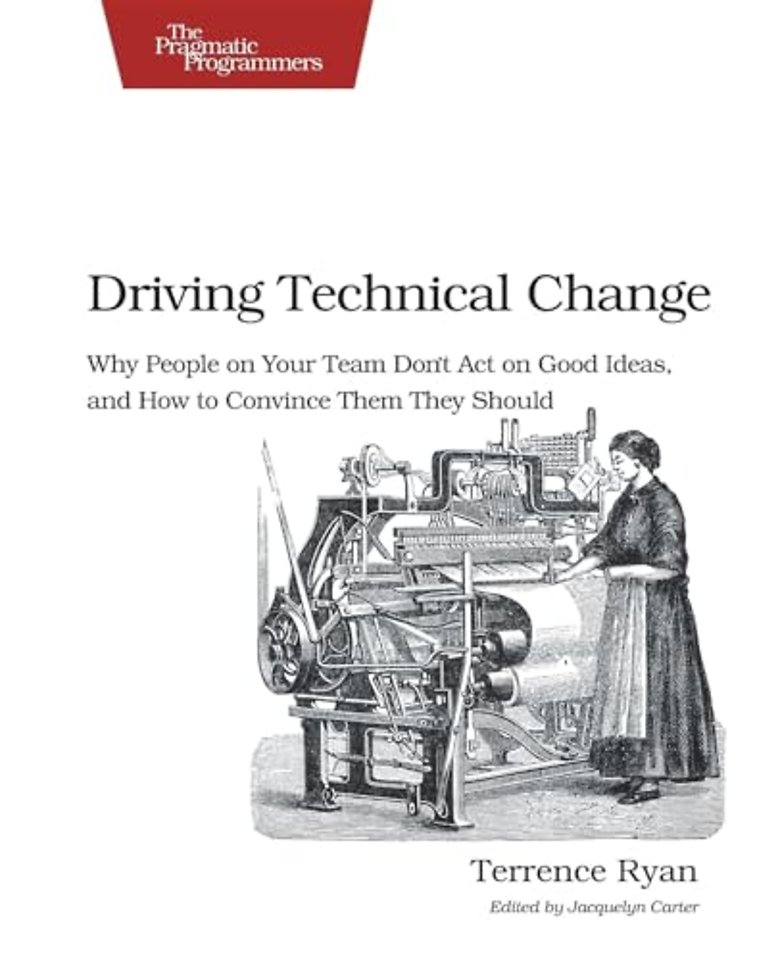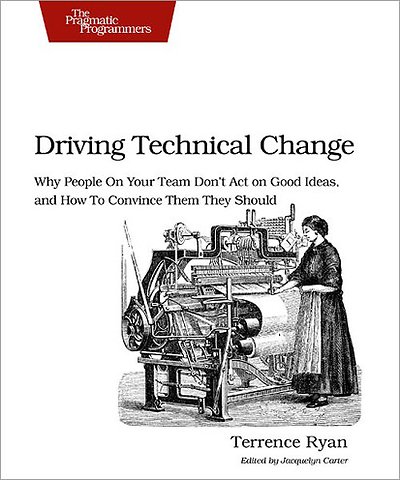Driving Technical Change
Why people on your team don't act on good ideas and how to convince them they should
Samenvatting
Finding cool languages, tools, or development techniques is easy-new ones are popping up every day. Convincing co-workers to adopt them is the hard part. The problem is political, and in political fights, logic doesn't win for logic's sake. Hard evidence of a superior solution is not enough. But that reality can be tough for programmers to overcome.
In 'Driving Technical Change: Why People On Your Team Don't Act on Good Ideas, and How to Convince Them They Should', Adobe software evangelist Terrence Ryan breaks down the patterns and types of resistance technologists face in many organizations.
You'll get a rich understanding of what blocks users from accepting your solutions. From that, you'll get techniques for dismantling their objections-without becoming some kind of technocratic Machiavelli.
In Part I, Ryan clearly defines the problem. Then in Part II, he presents "resistance patterns"-there's a pattern for each type of person resisting your technology, from The Uninformed to The Herd, The Cynic, The Burned, The Time Crunched, The Boss, and The Irrational. In Part III, Ryan shares his battle-tested techniques for overcoming users' objections. These build on expertise, communication, compromise, trust, publicity, and similar factors. In Part IV, Ryan reveals strategies that put it all together-the patterns of resistance and the techniques for winning buy-in. This is the art of organizational politics.
In the end, change is a two-way street: In order to get your co-workers to stretch their technical skills, you'll have to stretch your soft skills. This book will help you make that stretch without compromising your resistance to playing politics. You can overcome resistance-however illogical-in a logical way.
Specificaties
Inhoudsopgave
Part 1: Introduction
1. Why this book?
2. Defining the problem
3. Solve the Rigth problem
Part 2: Skeptic Patterns
4. Who are the people in your Neighborhood?
5. The uninformed
6. The Herd
7. The cynic
8. The burned
9. The time crunched
10. The boss
11. The irrational
Part 3 Techniques
12. Filling your toolbox
13. Gain Expertise
14. Deliver your message
15. Demonstrate your technique
16. Propose compromise
17. Create trust
18. Get publicity
19. Focus on synergy
20. Build a bridge
21. Create something compelling
Part 4: Strategy
22. Simple, not Easy
23. Ignore the irrational
24. Target the willing
25. Harness the converted
26. Sway management
27. Final Thoughts
A: Bibliography
Index
Anderen die dit boek kochten, kochten ook
Net verschenen
Rubrieken
- aanbestedingsrecht
- aansprakelijkheids- en verzekeringsrecht
- accountancy
- algemeen juridisch
- arbeidsrecht
- bank- en effectenrecht
- bestuursrecht
- bouwrecht
- burgerlijk recht en procesrecht
- europees-internationaal recht
- fiscaal recht
- gezondheidsrecht
- insolventierecht
- intellectuele eigendom en ict-recht
- management
- mens en maatschappij
- milieu- en omgevingsrecht
- notarieel recht
- ondernemingsrecht
- pensioenrecht
- personen- en familierecht
- sociale zekerheidsrecht
- staatsrecht
- strafrecht en criminologie
- vastgoed- en huurrecht
- vreemdelingenrecht







